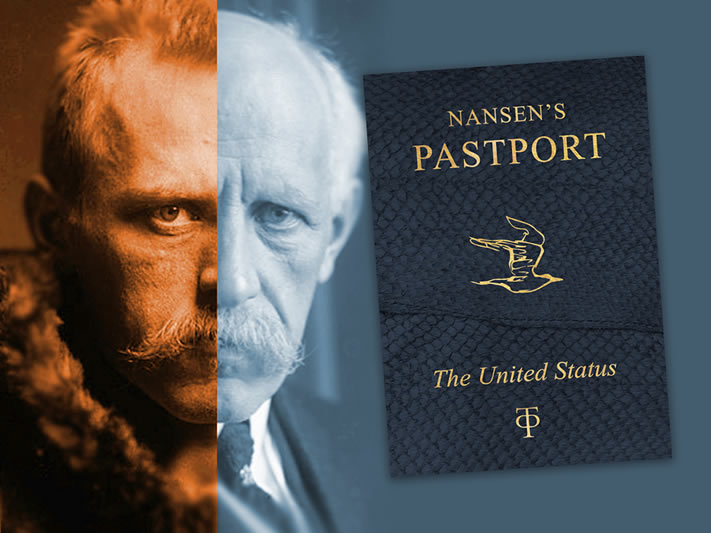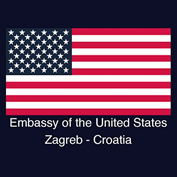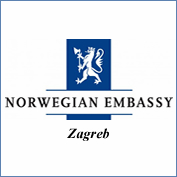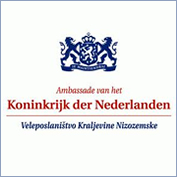Who is Fridtjof Nansen?

Fridtjof Nansen (1861-1930)
A Life in the Service of Science and Humanity
Childhood and Youth
Nansen was born in Norway on 10 October 1861, and grew to manhood at Frøen, on the outskirts of Christiania (now Oslo). His childhood home has now been engulfed by the expanding suburbs of the capital, but in the 1860s the district was still retained its unspoiled rural character. Only a stone’s throw from the Nansen home were vast expanses of forest and open country, offering unrivalled facilities for hunting, fishing and skiing, leisure-hour activities which early made their marks on his character. Nansen’s mother was passionately fond of skiing, at that time a sadly neglected national sport and one which was considered almost exclusively a male preserve. His father was a lawyer and the family were in comfortable circumstances. Nonetheless, the children received a spartan upbringing: They were taught a simple and frugal mode of life, quickly grew hardy and tenacious, and at a tender age mastered the art of fending for themselves in the wilds of nature. The parents attached primary importance to the inculcation into the children of sound moral qualities – integrity, independence and courage.
Fridtjof Nansen’s outdoor pursuits as a boy were in many ways to prove of vital importance to him. They developed his love and feeling for nature; made him frugal, self-reliant, enduring and companionable, strengthened his will and taught him to know his own strength and abilities. His love of the out-of-doors and his early ripening sense of kinship with nature proved determining factors when in 1880 he entered the University of Christiania: his choice of subject fell on zoology.
In the spring and summer of 1882, while still at university, he took part in an expedition to Jan Mayen on board the sealer Viking, a voyage that was to have a momentous influence on his future career. This gave him his first experience of the Arctic, and he was immediately captivated by the solitude and the silence, by the wild, majestic beauty of the trackless waters with their awe-inspiring scenery – scenery which by its very harshness constituted a challenge to a young man’s resources, strength and ambition, to his mind and his body. Even afterwards the polar regions were to exert a particular pull on him by virtue of their vastness and savagery: here, amid the icy wastes, he could put himself to the test, staking all he possessed of moral and physical courage, of will-power and endurance, of qualities of leadership and physical prowess. The Arctic was a man’s world.
For some time to come, however, his attentions were claimed by science and study. In the autumn of 1882 he took up an appointment at the Bergen Museum, where he completed his first independent piece of research, an investigation into the intricacies of the nervous system of lower animals. A thesis on the same subject gained him his doctor’s degree at the University of Christiania in 1888.
Across Greenland on Skis
As early as the year following his expedition to Jan Mayen, Nansen began to consider plans for a journey across Greenland, the world’s largest island. The interior of this barren land had remained completely unexplored, and in scientific circles of the time the most diversified and remarkable theories were held on conditions there. Nansen was keen to ascertain for himself what the country was like and felt that skis were the most suitable means of progression in these inhospitable regions – the aeroplane was, of course, still many years in the future. He had made a public announcement of his intentions in 1887, and in 1888, together with five companions, he put his plan to the test – and triumphed.
Like all Nansen’s schemes, the Greenland project was simple and bold, but needed thorough preparation, based on the ability to foresee unknown problems and difficulties. His intention was to cross the ice-cap from east to west. This choice of direction was highly characteristic of Nansen, involving as it did a journey from the uninhabited and altogether desolate east coast to the settlements of the west. There could be no turning back; the party would have no choice, they would have to push on. Burning his boats and cutting off his own line of retreat was then, as ever, Nansen’s way.
At the outset, the body of expert opinion decried his plan as madness. No one believed that skiers, without dogs and sledges, could traverse the inland ice, and was deemed indefensible not to have a base to fall back on. But the 27-year-old zoologist had his own way.
In the face of great difficulties and after serious delays caused by ice and weather, Nansen and his companions were set ashore on the east coast of Greenland in the vicinity of the Sermilik Fjord. Owing to these initial setbacks they were unable to commence the ascent of the glacier until 15 August, by which time the brief Arctic summer was drawing to a close. The journey proved unbelievably hazardous and exhausting, the party having to climb to nearly 9,000 feet above sea- level and pick its way between yawning fissures in the ice; at times the thermometer dropped to -45º C. Equipment and supplies were confined to what they were able to carry on their backs and pull after them on sledges made from skis, and they suffered agonies owing to a deficiency of fat, the result of incorrectly made-up pemmican. But despite every hazard and privation they achieved their object. By the end of September they had completed the descent to the west coast, and early in October they reached human habitation at Godthaab, where they spent the winter.
The expedition made a decisive contribution to scientific knowledge of the interior of Greenland – which many experts had previously held to be free of ice – and did much to promote world-wide interest in skiing.
The Voyage of the Fram
The Greenland crossing, however, was destined soon to be completely overshadowed by Nansen’s next expedition to the polar regions, on board the Fram.
Once again his plan was based upon a brilliantly simple, though boldly conceived and highly unorthodox idea, and once again the body of expert opinion dismissed it as folly. As far back as 1884 Nansen had read that wreckage from the American vessel Jeanette, which foundered off the New Siberian Islands, had been recovered close to the southern tip of Greenland. The wreckage must have been carried across the Polar Sea with the ice, a fact which pointed to the existence of a westerly ocean current in that region. Nansen’s novel idea was to sail a ship as far east as possible, off the coast of Siberia, and allow the vessel to be frozen in, in the hope that it would be carried across the Pole or a point close to it.
It was a revolutionary conception, and the plan required the most painstaking preparatory work. Every difficulty and hazard that might conceivably be met had to be foreseen and guarded against. Nansen afterwards confessed that he had taken steps to meet five times as many problems as the expedition actually encountered.
The primary task was to build a ship that could withstand the pressure of the ice. Nansen himself supervised the design and the construction. The hull of the vessel, characteristically christened the Fram (“Forward”), was made exceptionally strong, and her lines below the waterline were far rounder than customary. As a result, when the pack became jammed hard together and exerted tremendous pressure on her hull, the ship slipped free and was lifted clear instead of being crushed to pieces.
The expedition set out in the summer of 1893, the Fram steering an easterly course which took her along the Siberian coast. In September the drift with the ice began. Nansen’s theory proved well founded, and the ship was carried in a north-westerly direction. After a year in the grip of the ice, however, he was compelled to accept the disappointing fact that his course would not take him as far north as he had hoped, and the ship would not pass very close to the actual Pole.
He then came to the bold resolve to leave the ship, together with a chosen companion, Hjalmar Johansen, and to press on northwards across the packice, using skis, sledges drawn by dogs, and kayaks, with the aim of penetrating as far north as possible, perhaps to the very Pole. Again Nansen planned to burn his boats behind him, and to set off into the unknown, with supplies sufficient for one hundred days, and the knowledge that, to survive, he and his companion would have to make their own way back to firm ground and the world of men. The Fram, meanwhile, would continue her drift.
Nansen and Johansen set out in March 1895, the position of the Fram at that time being 84º latitude. Thrown entirely on their own resources, their progress constantly impeded by hummocks of ice and the open leads which appeared without warning in their path, they struggled on across the frozen seas towards an unknown fate alone and completely cut off from the civilized world. This was the testing time.
After a journey of incredible danger and privation, across almost impassable masses of ice – which to make matters worse, was drifting south – the explorers reached a latitude of 86º14′N, the closest to the Pole a human being had ever been, before they were forced to turn back, as their own provisions and the food for the dogs were rapidly approaching a dangerously low level. They had been away from the ship for 132 days before their southward trek brought them within sight of land. They made their way to one of the desolate islands of Franz Josef Land, and there were forced to spend the winter, existing in the most primitive conditions in a shelter built of rocks, ice, and hides; their stocks of fuel were almost exhausted, and for food they had to rely on the polar bears that fell to their guns. In the summer of 1896 they resumed their long journey to the south, travelling by kayak until finally they encountered the British explorer Frederick Jackson and the members of his party at Cape Flora.
Jackson took them back to Norway on his ship, the vessel disembarking them on their home soil in August; no word had been received from them since the expedition set out in 1893. The Fram returned almost at the same time, having emerged from the ice north of Spitsbergen. She had drifted for three years, which was precisely what Nansen had counted on when he laid his plans.
The exploits of the Fram and her crew attracted world-wide attention and ensured for Nansen a reputation unequalled by any other polar explorer of the time. Great admiration was aroused equally by his epoch-making ideas and plans, the results of scientific investigations, his organizing abilities and qualities of leadership, and his courage, resolution, and physical prowess in the face of the harshest natural conditions against which a man could conceivably pit himself.
The scientific results achieved were of great importance and to some extent revolutionary. One important fact that emerged from the expedition’s observations – which were collated and published in a six-volume scientific treatise – was that the Polar Sea is several thousand fathoms deep and completely devoid of islands; formerly, many authorities had held the view that this sea was shallow and interspersed with relatively large tracts of land. The scientific data brought back by Nansen also proved of great value in study of the earth’s magnetism and the aurora borealis, and also in the fields of arctic meteorology, oceanography, and zoology.
Nansen, who in 1897 was appointed professor of zoology at the University of Christiania, gradually acquired a keen personal interest in oceanography, and in 1908 took over a professorship in this subject, a branch of science in which he did invaluable pioneer work.
The account of the Fram expedition which he wrote for the lay public proved a best-seller all over the world, and he was invited to lecture before all the foremost geographical societies. The fame he had won and the authority he had acquired as a result of his exploits were to prove of inestimable value when he came to tackle the almost superhuman problems that lay ahead – tasks far removed from those on which he was engaged at the turn of the century.
Politics and Diplomacy
There was nothing Nansen wanted more than to be able to continue his explorations. He did succeed in taking part in a number of oceanographic expeditions, afterwards publishing some sensational accounts of his findings about he Norwegian Sea. He also embarked on the planning of new polar expeditions, including one which he hoped to lead to the South Pole. This project was destined never to be completed, however: Other more urgent tasks engaged all his attention, and as the years slipped away he was forced gradually to lay aside virtually all work of a scientific character. This entailed a major personal sacrifice, as nature, exploration and research were the subjects that lay closest to his heart.
But the other demands made upon him, first by his own country, later by millions of helpless people abroad, became increasingly pressing. A sense of obligation and compassion drove him to set aside his own desires, to sacrifice his own ambitions to help those less fortunate than himself, and to perform acts of mercy without regard to his own inclinations and convenience.
In 1905 Norway dissolved her uneasy union with Sweden, after close on a century of political controversy. This was a tricky operation, by no means without its dangers, and the shadow of armed conflict and international complications hung heavily over the two nations. In this fateful year for Norway Nansen played a very important role, both by virtue of his efforts to obtain the unified support of his people for the Norwegian Government’s resolute line of action and by explaining the Norwegian position and engendering goodwill for her cause among leading statesmen and the peoples of the world. In the chancelleries of Europe no door was closed to the famed explorer, and he rendered invaluable aid by publishing informatory articles in the world’s press. He also exercised a considerable influence on the Norwegian Government in its internal discussions regarding the settlement of the crisis, and he was appointed by the newly independent Norwegian state to be its first minister in London (1906-1908), where his personal standing was high.
During the First World War, Nansen, acting on behalf of the Norwegian Government, brought a difficult and important assignment to a successful conclusion. Owing to the intensified blockade that resulted from the entry of the United States into the war in 1917, the supply position of neutral Norway threatened to become acute. Nansen was despatched to Washington as the head of a delegation charged with the task of negotiating with the American authorities for a relaxation of the embargoes on certain goods. In this he was successful, a favourable agreement being concluded in the spring of 1918 after a great many difficulties had been overcome.
Repatriation of Prisoners of War
The war made an indelible impression of Fridtjof Nansen. The mass slaughter of men in the flower of their youth, the ravages wrought among women and children and the aged by starvation and disease, the unbelievable material destruction, the deterioration of moral values, with its resultant brutalization, glorification of violence, and the blunting of the finest instincts – these things grieved and appalled him. Thus he looked upon the prevention of the recurrence of such destruction as a task that overshadowed all else; and, as did so many others, he pinned his hopes on the League of Nations, on the efforts of the new world organization to preserve peace, to lay the foundations of an international judicial system to promote disarmament, and to help alleviate the indiscribable need and sufffering left in the wake of the war.
From the outset Nansen was actively dedicated to the concept of the League of Nations and to its policy, and from the inaugural meeting to his death he headed the Norwegian delegation in Geneva. In this capacity he devoted himself untiringly, despite many setbacks and disappointments, to the work of establishing a system of collective security and to bringing the nations of the world to a point where international disputes would be settled in the courtroom and at the conference table instead of on the battlefield. But as matters turned out, first and foremost he was destined to play the leading role in international humanitarianism both inside and outside the framework of the League.
The first major task to which he successfully applied himself was the repatriation of prisoners of war, a problem which the League of Nations first took up in the spring of 1920. Even at this late juncture, one year and a half after the armistice, hundreds of thousands of prisoners still remained in Siberia and other parts of Asiatic Russia, while considerable numbers were dispersed about the countries of south-east Europe. These unfortunates were legally free, and the countries in which they were located were more than willing to part with them; their dilemma was that owing to the chaos and impoverishment caused by the recent conflict and its immediate aftermath, the countries concerned lacked the means to repatriate the men left in their charge. Not only were they hampered by lack of funds and transport, but in many placed the whole machinery of government had broken down under the stress of circumstances, and the administration had disintegrated.
The plight of the prisoners in Siberia was the most desperate: they were starving, their clothing was in rags, medical aid and supplies were completely lacking, and they were without proper shelter; if they were not brought out before the winter of 1920-1921 set in, it was feared that the majority would die of starvation, exposure or disease.
The League of Nations Council came to the conclusion that if there were to be any possibility of saving the prisoners – in some cased even their whereabouts and numbers were unknown – relief measures would have to be placed in the hands of a man of international reputation for probity and ability. The Council’s choice fell upon Nansen. At first he refused because of scientific work, but finally allowed himself to be persuaded into taking on the assignment as the League of Nations High Commissioner for Prisoners of War. This decision was prompted both by compassion for the unfortunates still languishing in prison camps and by the fact that it was vital, if the League were to enjoy complete confidence, that its first major incursion into the field of practical organization should be carried out as quickly and as efficiently as possible – and he wished to do all he could to enhance the reputation of the League.
Nansen soon proved himself to be the right man for the job. In the first place he was an outstanding organizer on the purely practical plane, and, in the second place, he possessed such personal authority and enjoyed – a tribute to his firm character – such a trust that he could establish contact, mediate, and promote co-operation between governments and factions that were at loggerheads with one another. Not the least of his worries was the important task of building up a certain measure of mutual trust between the isolated Government of the newly emerged Soviet Union and the countries of the west.
Nansen negotiated with governments and made arrangements to build up efficient administrative machinery, raised money and obtained credit, secured supplies of food and clothing and medicaments, borrowed ships, and coordinated the efforts of the principal humanitarian organizations. It was a stupendous undertaking, but in the course of eighteen months it was successfully completed. Some 450,000 ex-prisoners of war from twenty-six different countries were returned to their homes – which for many of them was tantamount to being saved from certain death.
The Refugees
While he still had his hands more than full with the repatriations of prisoners of war a new burden was laid upon Nansen’s broad shoulders. This was relief work among the millions of political refugees whom the first world war and ensuing revolutions and civil disturbances had driven from their homes. These unfortunate people, uprooted and hunted, were dispersed throughout Europe and Asia and would not, or could not, return to their own countries. Many of them were completely without the necessities of life end did not know where they might settle; without work, poverty-stricken, lonely and unwanted, they were shunted back and forth from country to country. Numbers of them were in such dire need and extremes of wretchedness that their maintenance required substantial sums of money. This was another reason for wishing to find them a place where they might once again settle down, to provide them with employment, and to help them to lead worthy human lives once more.
In february 1921 the International Red Cross urged the League of Nations Council to do something about the refugees, and in August of the same year the Council asked Nansen to take on this added burden. Again he declared his willingness, although the task was of far greater magnitude and presented more difficulties than repatriating prisoners of war. In the first place it involved many more human beings and in the second place, generally speaking it was not simply a matter of returning the victims to their own countries, but finding them new homes; thirdly, it was very hard indeed to obtain residence and work permits for them in countries where economic crises and unemployment were the order of the day.
A special problem was presented by the fact that many of the refugees were without passports or identification papers, a circumstance which complicated their relations with the authorities. Nansen solved this difficulty simply and radically by introducing a new form of passport, a kind of international proof of identity, which he induced more than fifty governments to recognize.
Insuperable as this obstacle had appeared, it nevertheless proved to be the simplest part of the whole business. Far more difficult were the problems of finding permanent homes for the refugees, providing them with work, and starting them off to a new life. Here Nansen encountered both apathy and active opposition; but, as was his custom, re refused to admit defeat. He negotiated with the authorities in country after country, haggling and persuading, and succeeded in getting things done while yet engaged in an unceasing and enervating struggle to arouse the conscience of the world. All the time his efforts were hampered by lack of funds, so much so that some sections of the refugee population were threatened with mass starvation; often the only way he could save them was to draw upon his own private resources.
Unlike the repatriation of prisoners of war, relief work on behalf of the refugees could not be brought to a proper conclusion. It had to be continued, year in, year out, for the rest of Nansen’s life and beyond. It had not been completed when the Second World War broke out, causing tremendous new problems with which the United Nations and humanitarian bodies are still having to contend. To the end of his days Nansen himself worked unsparingly for the refugee cause, and was instrumental in setting up a number of international organizations devoted to their interests. After his death the work was carried on under the aegis of the League of Nations, inter alia through what became known as the Nansen Office; and after the second world war the United Nations assumed the burden.
Famine in Russia
Having charge of refugee relief work was a task which should have been more than sufficient for one man. But barely had Nansen taken up his duties in 1921 than yet another overwhelming task was pressed upon him. The Red Cross asked him to direct the work of saving millions of Russians from dying of starvation during the famine that followed in the wake of the first world war, the revolution, the civil war, and a wholesale failure of crops, an the same time as widespread and virulent epidemics took their toll of the exhausted populace.
In many respects this was the greatest and most difficult of all the humanitarian work Nansen tackled; in no other instance was the need so acute, the numbers threatened so vast, and the numbered saved so large. In the Ukraine and along the Volga, millions of emaciated, exhausted people were completely devoid of the means of subsistence – and the dread Russian winter was fast approaching. Many, beyond caring, surrendered quietly to death; others left all they held dear and in desperation set out to wander aimlessly about the parched steppe, in the vain hope of finding something with which to appease the gnawing pangs of hunger, but as a rule finding nothing more substantial that grass, bark and earth to eat. Hundreds of thousands of children were left by the wayside. Men and beasts alike were starving; in some places the peasants fought with the birds for the last few grains among the stubble, while reports from elsewhere hinted at cannibalism.
This time the relief work met with even greater political difficulties than before. The Russian civil war was only just over, and in many parts of the world the Soviet regime was feared and hated. The Communist Government was regarded with profound distrust, and many politicians looked upon aid to the starving Russian peasants as camouflaged support of bolshevism. Once again Nansen could make no progress with the League of Nations or with most of the governments he approached; at every turn, he found himself up against a blank wall.
The consequence was that, in addition to directing the tremendous organizational machinery which was an integral part of the relief work, both inside and outside Russia, he had personally to take charge of the task of raising funds by appealing to the general public directly, over he heads of its political leaders. He wrote reams; made fervent speeches; travelled ceaselessly, lecturing and appealing; organized collections; begged and entreated – and dipped deep into his own pocket to aid relief work. In 1922 he was awarded the Nobel Peace Prize for his work on behalf of the refugees, and a Danish publisher, Christian Erichsen, presented him with a sum equal to the prize money. All this Nansen devoted to relief.
Provision of aid to starving Russia extended over a period of two years, to the autumn of 1923, by which time the worst of the famine was over. Other organizations, notably the American Red Cross, assisted in this great work. It is of course impossible to measure with any accuracy just what Nansen and his associates accomplished; but it is estimated that they saved the lives of more than seven million persons, of whom six million were children. But Nansen was never the same after these terrible years. The horrors he had witnessed in Russia, and the tremendously exhausting work he had so unstintingly performed left their marks. He realized – and a painful realization it was – that he had now relinquished his scientific activities for good, and that in future only for brief periods would be able to make his escape into the great outdoors and the solitude he loved so well.
Mass Evacuation
Nevertheless, while still engaged in helping, the famine victims and refugees, he shouldered yet another tremendous burden. During the Greco-Turkish war, in the autumn of 1922, the Greeks suffered a decisive defeat in Asia Minor, and as a result were compelled to withdraw from Turkish territory. The retreating army was accompanied on its flight back to Greece by streams of Greek refugees, families which had lived in Asia Minor and Turkish Thrace for generations, but which had been ejected or had fled in panic, leaving behind all they could not carry on their backs or drag after them in carts. Some million people were involved, and all of them, completely lacking the necessities of life, poured into tiny unprepared Greece. This might easily have led to catastrophe, as Greece did not possess anything approaching the means to support this sudden influx of impoverished refugees.
The Greek Government turned in its hour of need to Nansen and urged him to organize international relief work. This he did, this time with the backing of the League of Nations and various European governments, with regard both to funds and to supplies of food, clothing, medicine, etc. The measures taken served to stave off the immediate disaster, but did not constitute a permanent solution to the problem. The question still remained of what was to be done with a million people, uprooted lock, stock and barrel from their homes. With relations between the two countries as strained as they were, they could not hope to return to their former homes in Turkey.
But there was a large Turkish minority living in Greece and many of them, feeling their existence threatened, were desirous of returning to their native land. Nansen therefore evolved a bold and highly unconventional plan for an interchange of these two groups. When first mooted, this idea met with bitter opposition in many quarters in both countries, and the plan was loudly condemned elsewhere as irresponsible and impracticable, criticisms by no means new to Nansen. But this time too, as in his younger days, he would not allow himself to be stopped by doubts and hesitations and objections when he himself was convinced that he had found the solution. The exchange plan was marked by the simplicity and breadth of vision that were typical of all Nansen’s enterprises, and his efforts to persuade both the Greek and the Turkish Government to adopt it were finally crowned with success.
This, however, was not the end of the matter by a long chalk. The work had to be organized and, not least, financed. Both tasks fell to Nansen. He managed to raise an international loan of no less the £12 million sterling, and with this at his disposal was able to effect the exchange. It proved to be the greatest mass exchange of peoples in history: one million and a quarter Greeks were transported from Turkish to Greek territory, while half a million Turks were sent the other way, thus enabling some two million distresses people to start new lives together with their fellow countrymen.
What this meant to these unfortunates may readily be imagined. There is considerable evidence to indicate that this mass evacuation has been a factor of great political importance in the relationship between the two countries concerned, as they have been spared the grave problems and antagonisms attaching to minorities which have so poisoned the atmosphere between many other nations.
In the course of his work in Greece and Turkey Nansen encountered numbers of Armenian refugees, and this led to his subsequent concern with the Armenian problem as a whole. The tragic history of the Armenians made a profound impression on him, and he devoted many years of hard work to the realization of President Wilson’s concept of providing the Armenians with a national home and the setting up of an independent Armenian state. One of the bitterest disappointments of his life resulted from the fact that this problem defied all attempts at finding a solution, the political obstacles proving insurmountable.
Although Nansen was a strongly built, robust man with nerves capable of standing up to any emergency, the almost inhuman burden of work he bore during the 1920s gradually took its toll. His powers were sapped not least by the many disappointments that came his way, by the dashed hopes, the expectations that came to naught when his appeals to the magnanimity and charity of politicians were met with pettiness and intrigue, callousness and apathy, narrow-minded national egotism and sheer human inertia. He realized that he could have done so much more for the unfortunate people he tried to aid, had he but received greater help and support from those with influence and power; but all too often he was compelled to bear the burden alone.
Those who were close to him have related how, during these exhausting years, he was often grey and haggard from fatigue; but he carried on till he dropped. He dies on 13 May 1930, not quite sixty-nine years of age, his great heart worn out by all that had been asked of it. In token of its esteem his country buried him on 17 May, its national day – an unprecedented honor.
The Man and his Work
In any attempt to portray Fridtjof Nansen and his magnificent and diverse achievements it soon becomes apparent that it was not his intellectual and artistic gifts that constituted the main feature of his character, though these talents were of a truly imposing, not to say universal, nature. His greatness sprang first and foremost from his moral qualities. He was what might be termed a moral genius, an upright and noble personality, a practical idealist, independent, incorruptible, and indomitable, uncompromisingly self-sacrificing, a man devoid of guile and to whom the concept of self-indulgence was entirely foreign. Despite his talents he achieved nothing without effort; things did not simply fall into his lap. “By nature I am weak,” he once remarked. “What character I have stems from my strict upbringing.” What he omitted to say, but might well have added, was that this upbringing was in large measure, something for which he himself was responsible; it was self-discipline. He was a man of strong will, and one who invariably set himself the highest standards.
A man may, of course, be both talented and of noble character without necessarily achieving very much. That Nansen accomplished such great things as an explorer and scientist, as a diplomat, politician, and humanitarian, is attributable to the fact that he was both a thinker and a man of action, that his mind could visualize the whole, the broad outline, and also cope with the many practical details. He may appear as a rule to have been lucky, but generally such luck as he had was of a “calculated” variety, based on systematic groundwork which left as little as possible to chance. This applies both to the thorough analyses he always made of a plan, or problem, in broad outline and to the thousand-and-one tiny, but essential details of that plan, details which might have caused the best of schemes to founder.
It has often been said that much in Nansen’s character bore the stamp of simplicity. This is quite true, but it was the large-scale simplicity that marks men of genius and of outstanding accomplishments, a simplicity far removed from the primitive and uncomplicated, one which is bound up with the ability to take an over-all view, the vital thread in a mass of details, pare away the incidental and nonessential, discover the main principles, and make a synthesis.
Some people may see something naive in Nansen’s faith and will and power of action, and it must be admitted that he was in no way one of those sophisticated persons who are filled with doubts and anxieties. What constituted so much of his greatness and so often brought him success was his capacity at the crucial moment, after painstaking analysis and consideration, to cast aside all doubts and to back his decision with his life if need be.
He assumed the mantle of a moral leader of rare stature in the present century precisely because of his “naive” faith in such simple, fundamental values as the dignity of man, humanity, and compassion. Never did he cease to proclaim these values – not in words alone, but also in deeds. Never did he tire in his endeavours to put them into effect in his own works; or to be more accurate, though frequently tired, never did he give way to fatigue or despondency. By his own example he showed the world what unselfish actions and self-sacrifice really are, not only by devoting a doubled Nobel Prize to relief work, but also by giving up his scientific interests and dedicating ten years of his life to the service of his fellows. This latter was a sacrifice that cost him dear, far more so that the gift of money.
And he sacrificed still more – his health. In the international field he literally worked himself to death. Thus it is not strictly correct to say that he died of a heart failure; he died because his heart never failed.
When in 1926 the students of St. Andrews University did him the great honor of electing him rector, he made a speech in which he praised – in addition to such qualities as courage and self-reliance – first and foremost the spirit of adventure, the urge to accomplish things. This was at all times one of his principal qualities. In his younger days he staked his very life on his polar expeditions, leaving himself no line of retreat. In his later years he just as uncompromisingly staked his fortune and scientific interests, his life and health, to aid suffering humanity. For his deeds in both fields his name will ever be remembered and honored throughout the world.
Quotations from Nansen
“Man wants to know, and when he ceases to do so, he is no longer a man.”
























